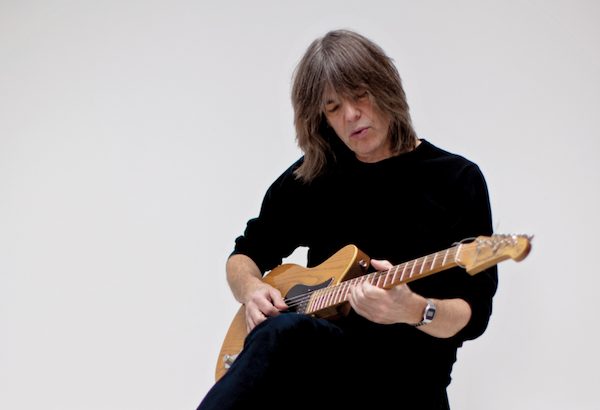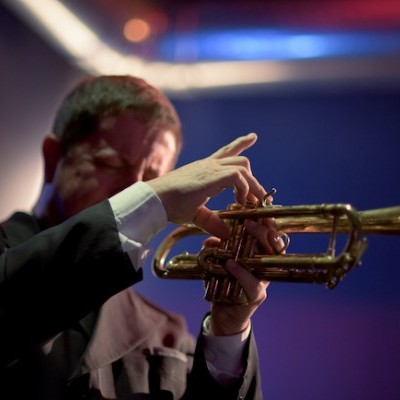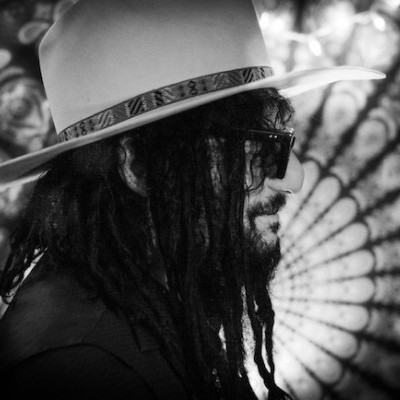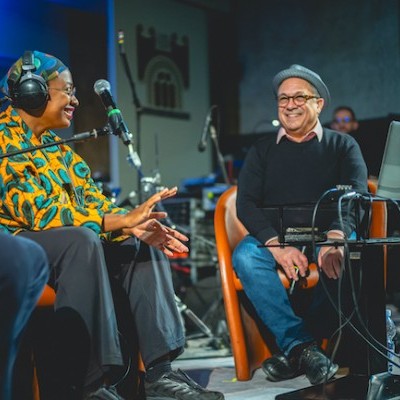Jul 9, 2024 11:35 AM
Trumpeter, Educator Jim Rotondi Dies at 61
Jim Rotondi, a renowned hard-bop trumpeter, composer and educator, died suddenly on July 7 at a hospital in France. He…

Mike Stern’s latest album, Trip, was released Sept. 8.
(Photo: Sandrine Lee)Mike Stern’s new album Trip is a curiously dissonance-tinted affair—perhaps referencing the fusion guitarist’s difficulty in adjusting to making music with nerve damage in his right arm, suffered from a fall last summer.
But there was nothing dissonant about his quartet performance Sept. 8 at Blues Alley in Washington, D.C.. That’s partly because they didn’t much assay the new tunes; until that week, Stern, trumpeter Randy Brecker, bassist Tom Kennedy and drummer Dennis Chambers hadn’t been in the same place long enough to rehearse them, and stuck to material they knew. But it’s also because these four fusion veterans, long acquainted, relied instead on the twin engines of groove and chemistry.
The former, of course, is impotent without the latter, and Stern knew it from the get-go. Opening on the quasi-swinging “Out Of The Blue,” the guitarist’s solo was so intent on carrying the groove in its first chorus that it spent several bars playing straight four-to-the-bar notes. But then Chambers shifted into standard spang-a-lang, and the tune’s previously downplayed 12-bar-blues frame suddenly became obvious. (Stern knew this, too, making a sudden turn into classic blues licks.)
After Brecker and Kennedy added their solos, Chambers turned the rhythm into an open experiment: He began a series of cross-rhythms between his snare and bass drums, never letting the kick accent fall in the same place against the snare’s insistent vamp; then came a thunderous, speedy solo that might have held its own against any heavy metal drummer.
Chambers continued experimenting on Stern’s “KT,” kicking from steady funk-rock into 7/8 toward the tune’s end while the rest of the band stayed in 4. But he never quite abandoned groove; indeed, he often established it, as when he and Kennedy spontaneously burst into the unmistakable rhythm of “Papa Was A Rolling Stone.” It eventually allowed Kennedy to become the venturesome one, unleashing a sixteenth-note attack with a meaty, melodic trajectory. The glee on the bassist’s face was obvious—and contagious, spreading immediately to Stern, Brecker and Chambers.
The part played by the group’s synergy, however, can’t be understated. For one thing, they erupted at least once into a jam, Stern and Chambers quickly joined by Kennedy and Brecker to charge down a gauntlet of jazz-funk. For another, it allowed them to explore several different rhythmic feels at once: The set’s third song (which Stern didn’t name, but which sounded very much like Trip’s “Emilia”) had a light Caribbean pulse at its core, though Stern, Chambers and Kennedy all played separate variations on it that coalesced into that core.
When Brecker entered, he first challenged all of these—he blew long, syncopated notes against their accents (especially Stern’s). By the time his solo began, though, the trumpeter had joined the fray, and added a bit of a soft-shoe cadence to the rhythmic mix.
Stern, incidentally, never evidenced any loss to his technical ability. If anything, he seemed charged up, finally releasing that energy with high-voltage blues riffs in a short but intense encore of Jimi Hendrix’s “Red House.” The lesson, perhaps, is that if a musician finds a stride with a few close colleagues, the technique takes care of itself. DB

Jim Rotondi was acclaimed for his wide, round trumpet tone, remarkable virtuosity and assured swing.
Jul 9, 2024 11:35 AM
Jim Rotondi, a renowned hard-bop trumpeter, composer and educator, died suddenly on July 7 at a hospital in France. He…

Charles Lloyd, seen here at the 2024 New Orleans Jazz & Heritage Festival, makes DownBeat Poll history!
Jul 11, 2024 12:23 PM
The incomparable Charles Lloyd swept the 72nd Annual DownBeat Critics Poll, becoming the first artist ever to earn…

“Being president of Blue Note has been one of the coolest things that ever happened to me,” Was said. “It’s a gas to serve as one of the caretakers of that legacy.”
Jun 4, 2024 12:21 PM
Sitting with Don Was is a comfortable and unhurried exercise. He may seem slightly reserved at first, but ideas and…

“She reminds me of my childhood and makes we want to cry,” Cécile McLorin Salvant, pictured here with writer Ashley Kahn, said of Dianne Reeves.
Jun 11, 2024 12:31 PM
Italy’s Umbria Jazz Winter is one of those rare annual festivals that not only coincides with a major holiday —…

Maria Schneider said of Decades, her new compilation release: “I just wanted to create something, put it in a beautiful box and say, ‘Look at what we did.‘”
Jun 18, 2024 12:00 PM
Maria Schneider opened the sleek black box and placed it on a coffee table in her Manhattan apartment. Inside lay the…